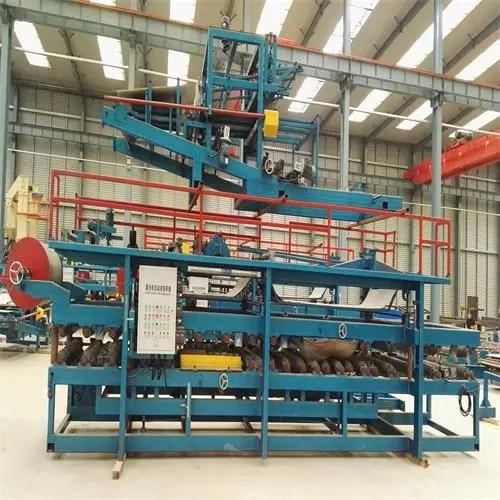
The Evolution and Importance of Outdoor Cable Tray Roll Forming Machines
In the modern world, where infrastructure and technology constantly evolve, effective management of electrical wiring is crucial. One of the key components that ensure efficient infrastructure is the cable tray. Specifically designed for supporting insulated electrical cables, cable trays play a vital role in cable management, promoting better organization and enhancing safety. Amidst this growing demand, outdoor cable tray roll forming machines have emerged as a significant innovation in the manufacturing sector.
Understanding Cable Trays
Cable trays provide a robust and versatile solution for various wiring needs, particularly in industrial and outdoor environments. Unlike traditional wiring systems, which can often lead to tangled and chaotic installations, cable trays offer a systematic approach. They come in various forms, including ladder, solid bottom, and ventilated styles, catering to different installation needs. These trays not only protect the cables from environmental hazards but also facilitate ease of access for maintenance.
The Role of Roll Forming Machines
The production of cable trays requires precision engineering and high-quality materials, which is where outdoor cable tray roll forming machines come into play. These machines are designed to manufacture cable trays efficiently through a continuous bending process. Roll forming involves feeding flat metal strips through a series of rollers, gradually shaping the metal into the desired profile. This manufacturing technique ensures that each tray maintains consistent quality, reduces waste, and enhances production efficiency.
Advantages of Outdoor Cable Tray Roll Forming Machines
1. High Efficiency and Output One of the significant advantages of roll forming machines is their high-speed output. These machines can produce large quantities of cable trays in a shorter period, meeting the growing demands of the market without sacrificing quality.

2. Versatility Outdoor cable tray roll forming machines can be adjusted to produce various tray types and sizes. This flexibility allows manufacturers to respond quickly to different project requirements, whether they involve residential, commercial, or industrial applications.
3. Cost-Effectiveness The efficient production capabilities of these machines lead to reduced labor costs and minimal material wastage. By using optimized roll forming techniques, manufacturers can ensure that their operations remain financially viable while maintaining high standards.
4. Durability of Products The roll forming process allows for the use of a wide range of materials, including galvanized steel, aluminum, and stainless steel. These materials are known for their strength and resistance to corrosion, making the cable trays robust enough for outdoor use.
5. Environmental Benefits With an increasing focus on sustainability in manufacturing processes, outdoor cable tray roll forming machines can significantly reduce the carbon footprint of cable tray production. The efficiency of the machines minimizes waste and energy consumption, aligning with eco-friendly practices in the industry.
Conclusion
The demand for cable management solutions continues to rise as urban infrastructures expand and technology advances. Outdoor cable tray roll forming machines play an essential role in meeting this demand through their innovative design and efficient production capabilities. As manufacturers seek to enhance the quality and performance of their products, investing in advanced roll forming technology is vital.
In an increasingly connected world, the importance of reliable electrical systems cannot be overstated. By ensuring that cable trays are manufactured efficiently and to high standards, outdoor cable tray roll forming machines contribute significantly to the safety, reliability, and organization of electrical installations. As the industry evolves, these machines will remain pivotal in shaping the future of electrical infrastructure, fostering a seamless integration of technology and engineering.